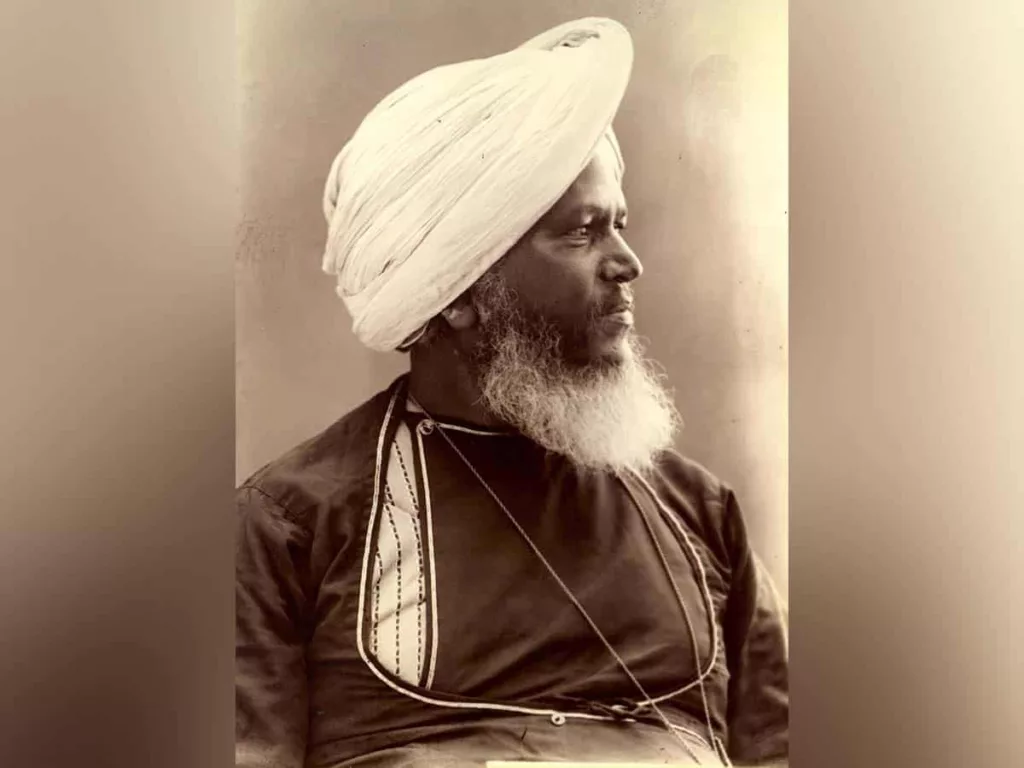Raja Deen Dayal, a pioneering figure in Indian photography, immortalized Hyderabad’s forts, palaces, temples, mosques, and monuments, creating a visual narrative that endures to this day. His lens also captured the essence of its diverse society, from the affluent to the humble, and chronicled the interactions between Hyderabad and the foreign travellers who visited to witness its rich cultural aspects.
Born in 1844 in Sardhana, Uttar Pradesh, Dayal’s early life was steeped in a traditional education in Persian, Urdu, and English. Initially, on the path to a career in civil engineering, he studied at the Thomason Civil Engineering College in Roorkee, later joining the Public Works Department in Indore as a junior draftsman. The same college is now known as IIT Roorkee and has the credit of being the first engineering college in India. However, his fascination with the emerging art of photography soon took precedence. Trained under British photographers in Delhi, Dayal honed his craft and, in 1865, moved to Hyderabad, where he established the studio “Raja Deen Dayal & Sons.”
Dayal’s work quickly caught the eye of the Nizam of Hyderabad, who appointed him as the official court photographer. Through his camera, Dayal documented the opulence of the Nizam’s court, from the intricate details of the Charminar to the grandeur of the Falaknuma Palace, Chowmohalla Palace and the vibrant life of Lad Bazaar taken in the 1880s. His photographs of Arts College, Osmania University, Makkah Masjid, the Golconda Fort, the Qutb Shahi tombs, etc. are remarkable to this day. His lens also captured the people, from the Nizam to the nobles and commoners, offering a glimpse into their lives and the cultural richness of the time.
The interior of Falaknuma Palace is regarded as one of the best in India, The Photograph taken by Deed Dayal before it went into ruins and was tactically renovated by the Taj Group spending huge money.
In the mid-19th century, photography in India was still in its infancy, with cumbersome equipment and long exposure times making it a challenging pursuit. Despite these obstacles, Dayal was drawn to the medium and soon began experimenting with photography alongside his engineering duties. His early work which included landscapes and architectural studies, garnered attention and praise, encouraging him to pursue photography more seriously. Over the years, he refined his craft, assembling his camera equipment and developing a style that blended technical precision with artistic sensibility.
Dayal’s reputation grew, and he was conferred the title of ‘Raja Musavir Jung’ by the 6th Nizam Mir Mahboob Ali Khan. So pleased was the Nizam with the portrait Dayal had captured that he even wrote a couplet for him that says: Ajab yeh karte hain tasvir mein kamaal/ Ustaadon ke hain ustaad Raja Deen Dayal (In the art of photography, he surpasses all. The Master of Masters is Raja Deen Dayal).
Deen Dayal often travelled as part of the entourage to record various activities of the Nizam. During the tiger hunting expeditions in the jungles of Deccan, Nizam habitually posed with the tiger trophies and Dayal was only delighted to record it.
His work extended beyond Hyderabad, as he travelled extensively across India, documenting the country’s cultural heritage. His photographs of the Taj Mahal, the ghats of Varanasi, the ramparts of Gwalior Fort and other iconic sites are considered some of the finest examples of early Indian photography. His contributions were recognized with numerous accolades, including the Royal Warrant in 1897, appointing him Photographer to Her Imperial Majesty Queen Victoria. He also received awards at various photographic exhibitions in Chicago, Jaipur, Calcutta and London.
A specially created certificate called the “Warrant” was issued to Deen Dayal for his exemplary architectural photography of Palaces and Temples in India.
Raja Deen Dayal’s legacy is a testament to the power of photography to transcend time and tell the story of a bygone era. His true-to-life photographs provide a rare glimpse into the picturesque opulence and genteel grandeur of 19th-century India, capturing moments of royal hunts, parades, and the everyday lives of the people. His work is not just a record of the times but a visual narrative that resonates with the cultural ethos of India, blending the aesthetics of classical Indian art and European painting.
Although Dayal passed away in Bombay on July 5, 1905, his photographs remain treasured by collectors, historians, and art lovers alike. His descendants who live in Hyderabad also have some of the fabulous photographs taken by Raja Deen Dayal.
The outstanding photographs offer a window to a bygone era and stand as a testament to the enduring power of visual storytelling. His legacy continues to inspire photographers around the world, reminding us of the importance of preserving history through the lens. A significant portion of his work now resides at the Indira Gandhi National Centre for the Arts in New Delhi, ensuring that his contributions to Indian photography are remembered and celebrated.
Photographs 1 to 3 contributed by Vikas Chand Jain, Great-great-grandson of Raja Deen Dayal
Get the latest updates in Hyderabad City News, Technology, Entertainment, Sports, Politics and Top Stories on WhatsApp & Telegram by subscribing to our channels. You can also download our app for Android and iOS.
